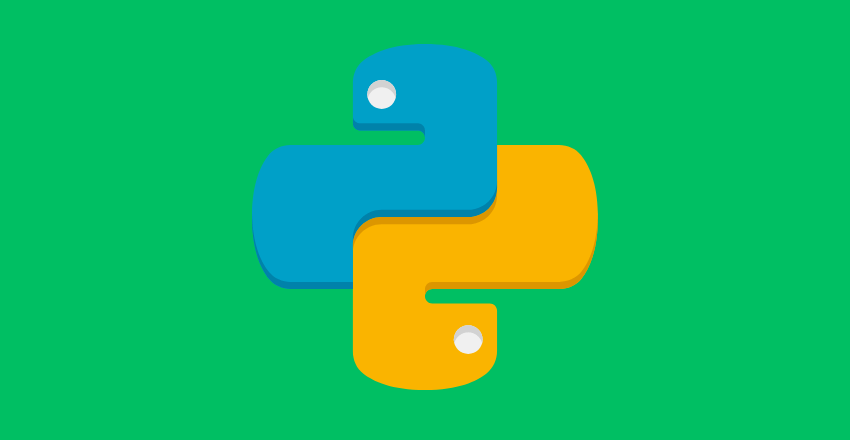Why is Python programming considered the top language? Discover its readability, scalability, and extensive package ecosystem.

In our exploration of programming languages, one stands out: Python. We’ll dive into why Python has garnered such adoration among developers, its rise to prominence, and its unique benefits.
1. Python’s Humble Beginnings
Guido van Rossum, a Dutch programmer, planted Python’s seeds in the late 1980s. His vision was to create a simple yet powerful language that could facilitate tasks requiring swift execution. Inspired by Monty Python’s Flying Circus, he coined the name Python for his brainchild.
A fitting choice, given Python’s eventual versatility, capable of squeezing through complex coding challenges.
Key Takeaway: Python’s creation was driven by a desire for simplicity and efficiency.
Exemplify: Think of Python as a Swiss Army Knife, ready to tackle a multitude of tasks.
Pro tip: When starting with Python, embrace its simplicity. It’s designed to make coding easier.
2. Python’s Rise to Popularity
Python‘s popularity didn’t skyrocket overnight. A steady ascent from the early 1990s to the late 2000s marked its growth. But, with the advent of big data and machine learning in the 2010s, Python’s star truly began to shine. Its ease of use and versatility made Python the language of choice for data science and machine learning.
Key Takeaway: Python’s growth in popularity aligns with the rise of data science and machine learning.
Exemplify: Like a climber gradually reaching the summit, Python’s growth has been a steady journey upwards.
Pro tip: Familiarize yourself with Python’s data handling capabilities. They are an essential part of its charm.
3. Why Python Outshines Others

When comparing Python to other languages like Java, one cannot ignore Python’s elegant simplicity. Its syntax is more straightforward, making it easier for newcomers to grasp. Whereas Java’s syntax can seem convoluted, Python syntax shines with its readability and minimalism.
Key Takeaway: Python’s syntax is more accessible and easier to learn than many other languages.
Exemplify: If programming languages were instruments, Python would be the ukulele – simple, fun, and easy to learn!
Pro tip: Don’t get overwhelmed by Python’s simplicity. It’s powerful enough to handle complex tasks.
4. Python and Machine Learning
Python’s role in machine learning is crucial. Its comprehensive libraries like TensorFlow and PyTorch offer machine learning functionality right out of the box. This makes Python an ideal choice for machine learning projects, outpacing languages like R and Julia.
Key Takeaway: Python’s rich libraries make it a go-to choice for machine learning.
Exemplify: Python is to machine learning what a well-stocked toolbox is to a handyman.
Pro tip: Get comfortable with Python’s machine learning libraries. They’re indispensable for modern data science.
5. Python’s Interpreted Nature
Unlike compiled languages like C++, Python is an interpreted language. This means that Python code is executed line by line, simplifying debugging and making Python more flexible. However, this can come with a slight performance cost.
Key Takeaway: Python’s interpreted nature offers simplicity at the expense of some performance.
Exemplify: If Python were a car, it’d be an automatic – easy to drive, but not the fastest on the track.
Pro tip: Don’t worry about Python’s speed for most tasks. Its benefits often outweigh potential performance concerns.
6. Python’s Importance Today
In today’s fast-paced digital world, Python’s significance cannot be overstated. From web development to
data science, from start-ups to tech giants, Python finds its place everywhere. Its broad range of applications and user-friendly nature make Python a universal soldier in the programming world.
Key Takeaway: Python’s versatility makes it invaluable in today’s diverse tech landscape.
Exemplify: Consider Python a master key, capable of unlocking various domains in the tech world.
Pro tip: Keep exploring new areas where Python can be applied. Its versatility may surprise you.
7. Pros and Cons of Python
Like any tool, Python comes with its strengths and weaknesses. Its simplicity, versatility, and strong community are its main advantages. Yet, Python may not be ideal for tasks requiring high performance, like game development or system-level programming.
It also isn’t as efficient for mobile application development as some other languages.
Key Takeaway: Python excels in many areas but may not be the best choice for performance-intensive tasks.
Exemplify: Imagine Python as a multi-purpose kitchen knife. Perfect for chopping vegetables, not so much for slicing a steak.
Pro tip: Choose the right tool for the job. Python is powerful but has its limitations.
8. Python’s Unprecedented Popularity
In 2021, Python was ranked as the most popular programming language by the IEEE Spectrum. Its popularity is driven by its use in trending fields like data science, artificial intelligence, and web development. Learning Python can open a multitude of career opportunities.
Key Takeaway: Python’s popularity can be a steppingstone for lucrative career paths.
Exemplify: Learning Python is akin to learning English. It opens doors to many opportunities.
Pro tip: Start learning Python today. Its popularity isn’t waning anytime soon.
9. Python vs. Java
While Java has its strengths, particularly in enterprise environments, Python often comes out on top due to its simplicity and versatility. Python’s readable syntax and ease of learning make it more appealing, especially to beginners.
Key Takeaway: Python often edges out Java due to its simplicity and ease of learning.
Exemplify: If Java and Python were cars, Java would be a heavy-duty truck, while Python would be a versatile sedan.
Pro tip: Start with Python if you’re new to programming. It’s easier to grasp.
10. Python’s Extensive Standard Library

One of Python’s standout features is its extensive standard library. This library is a collection of modules and packages that provide ready-to-use functions and tools for various tasks. It covers a wide range of domains, including file handling, network programming, web development, and more.
Python developers can leverage these pre-built components to accelerate their development process and reduce the need for reinventing the wheel.
Key Takeaway: Python’s standard library offers a wealth of pre-built functionality, saving developers time and effort.
Exemplify: Think of Python’s standard library as a well-stocked toolbox, with all the essential tools you need for any project.
Pro tip: Familiarize yourself with the standard library. It can significantly boost your productivity as a Python developer.
11. Python’s Robust Community and Package Ecosystem
Python boasts a vibrant and active community of developers who contribute to its growth and success. This community-driven culture has led to the creation of a vast package ecosystem. Packages, such as NumPy, Pandas, and Django, expand Python’s capabilities and provide specialized tools for specific domains. Developers can tap into this ecosystem to find solutions, share knowledge, and collaborate on projects.
Key Takeaway: Python’s strong community and extensive package ecosystem provide valuable resources for developers.
Exemplify: Consider the Python community as a bustling marketplace, with developers exchanging ideas, innovations, and solutions.
Pro tip: Engage with the Python community, contribute to open-source projects, and leverage existing packages to enhance your Python skills.
12. Python’s Readability and Maintainability
Python’s design philosophy emphasizes readability. Its clean and concise syntax, along with the use of indentation to denote code blocks, makes it easier to understand and maintain. This readability aspect is particularly important when working on collaborative projects or maintaining legacy codebases. Python’s readability helps reduce errors, improves code comprehension, and enhances overall software quality.
Key Takeaway: Python’s emphasis on readability makes it easier to write, understand, and maintain code.
Exemplify: If programming languages were books, Python would be a well-structured novel with clear chapters and paragraphs.
Pro tip: Follow Python’s style guidelines, such as PEP 8, to ensure your code is consistent, readable, and maintainable.
13. Python’s Cross-platform Compatibility
Python’s cross-platform compatibility is a significant advantage for developers. Python code can run seamlessly on various operating systems, including Windows, macOS, and Linux. This cross-platform support eliminates the need for developers to rewrite their code for different environments, saving time and effort. It also enables the development of platform-independent applications, making Python a versatile choice for software development.
Key Takeaway: Python’s cross-platform compatibility allows developers to write code once and run it on multiple operating systems.
Exemplify: Think of Python as a universal translator, bridging the gap between different platforms and ensuring seamless execution.
Pro tip: Test your Python code on multiple platforms to ensure compatibility and address any platform-specific issues.
14. Python’s Scalability and Performance Optimization
While Python may not be the fastest programming language, it offers various techniques for scalability and performance optimization. Python provides options like multiprocessing, threading, and asynchronous programming to leverage parallelism and improve execution speed.
Additionally, developers can integrate lower-level languages like C or Python to optimize critical sections of their code, achieving a balance between Python’s ease of use and performance requirements.
Key Takeaway: Python offers scalability and performance optimization techniques to address speed limitations.
Exemplify: Python is like a well-tuned engine, capable of achieving remarkable performance when fine-tuned.
Wrapping up
Python’s simplicity, versatility, and widespread use make it a top language in today’s programming world. As technology advances and fields like machine learning continue to grow, Python’s relevance only seems to increase. So, why is Python programming considered the top language?
Simply because Python has proven itself to be an adaptable, accessible, and powerful tool in a world that increasingly relies on digital solutions.
Lydia is a seasoned technical author, well-versed in the intricacies of software development and a dedicated practitioner of Python. With a career spanning 16 years, Lydia has made significant contributions as a programmer and scrum master at renowned companies such as Thompsons, Deloit, and The GAP, where they have been instrumental in delivering successful projects.
A proud alumnus of Duke University, Lydia pursued a degree in Computer Science, solidifying their academic foundation. At Duke, they gained a comprehensive understanding of computer systems, algorithms, and programming languages, which paved the way for their career in the ever-evolving field of software development.
As a technical author, Lydia remains committed to fostering knowledge sharing and promoting the growth of the computer science community. Their dedication to Python development, coupled with their expertise as a programmer and scrum master, positions them as a trusted source of guidance and insight. Through their publications and engagements, Lydia continues to inspire and empower fellow technologists, leaving an indelible mark on the world of scientific computer science.







